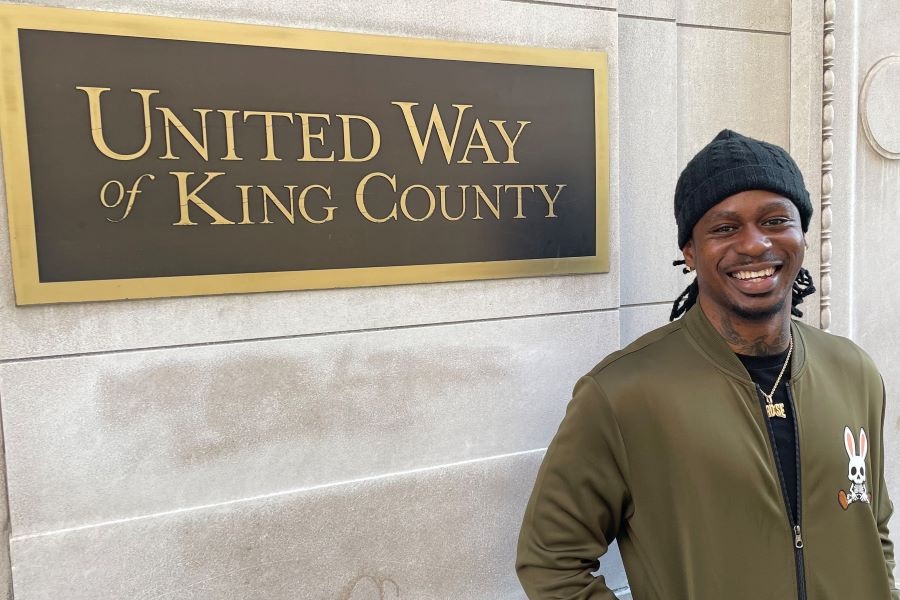Strength in Spirit: De’Vonte’ Parson of Pro Se Potential
Visitation time from his 3-year-old daughter and her mom made De’Vonte’ Parson’s bid behind bars somewhat easier to endure. But for the child, the brief tenure wasn’t enough.
“Daddy,” she asked on one occasion, “When are you coming home?”
Facing the possibility of a sentence he didn’t care to ponder at that moment, Parson gave the best answer he could muster.
“Baby girl,” he replied. “I don’t know when I’m coming home. But I’ll be home.”
But the child pressed further. “Is it going to be Monday?”
“No.”
“Tuesday?”
“No.”
“Wednesday?”
“No.”
Parson’s daughter went through the entire week but came no closer to the answer she sought. So, she returned to the original question:
“Daddy, when are you coming home?”
“Baby girl, listen,” Parson said. “I don’t know when I’m coming home, but I’ll be home.”
Then the 3-year-old paused for a moment and asked her father two questions that made him rethink both his incarceration and the gang culture that had led to it:
“Daddy, you’ve been in here before, right?”
“Yes, I have.”
“Well, what makes you think that if you get out you won’t go back again?”
That Damascus Road moment was nearly 10 years ago, and for Parson, it set in motion actions to ensure that not only would he fulfill his promise of coming home but launch a program to help others either returning from incarceration or at risk of imprisonment.
Those actions included his founding of Pro Se Potential, a program that provides youth with access to resources and peer mentorship for a safe and effective transition to adulthood. Pro Se Potential targets youth impacted by the justice system and who need to complete diversion and/or probation requirements as part of their sentencing. It incentivizes youth to seek and participate in therapy. And it rewards youth for making positive strides in their educational journeys.

United Way of King County helped fund the start of Pro Se Potential with grants that enabled Parson to hire part-time staff, contract partners to pair with youth and rent office space. With Pro Se Potential, Parson seeks to build up youth broken from the ills of the streets and all but written off by society. Through mentorship, he helps develop their sense of trust, their confidence, and their self-esteem.
And his efforts are paying off. Of those who complete the Pro Se Potential program, 98% have obtained employment, 90% have increased school engagement, and 92% have remained out of the criminal or juvenile justice system six months later.
“I’ve devoted my life to transition and self-development,” Parson said, “and I want to be the light in anyone’s life I come across.”
Parson says as a child he could have benefitted from the program he later founded.
He grew up in Seattle’s Yesler Terrace housing project, a venue that has the distinction of being not only Washington state’s first public housing development but the first racially integrated public housing project in the United States. Yesler Terrace was built in the early 1940s and designed with good intentions for low-income families; it provided suitable housing with private backyards for the city’s blue-collar population and was once a vibrant and close-knit melting pot.
But by the time Parson came along, Yesler Terrace had endured decades of neglect, disrepair, and a lack of true investment and supportive services. That ultimately took a toll on the community. Amid the crack epidemic that overwhelmed some of the poorest neighborhoods in America, Yesler Terrace became embroiled in drugs, prostitution, gang culture, and violence.
Coming out of his home one day as a 9-year-old, Parson saw his first dead body lying on the street. Walking past people strung out on drugs or witnessing gangs running rivals off their turf became a regular occurrence in his childhood. His grandmother tried her best to keep him on the straight path; she made Parson read books, including the dictionary. But ultimately the lures of the gang culture won out. Parson became what he beheld and subsequently found himself in and out of incarceration.
You can hear the full interview with Parson—including a conversation about the factors that he says contribute to youth violence and misbehavior—on Hourglass, United Way of King County’s podcast.
In 2015, Parson landed in jail after being charged with eight counts of first-degree assault for his involvement in a drive-by shooting. He faced the possibility of life in prison. But while behind bars he surprisingly developed a reputation for providing pathways for younger inmates to stay out of jail once they completed shorter stints.
He had not, however, forged a similar path for himself, and during a visitation moment at that time, Parson’s 3-year-old wondered whether he could.
“My own daughter!” Parson said. “My 3-year-old daughter didn’t believe I had what it took to make it as a free citizen because she didn’t have confidence that her dad could stay out of jail. When I went back to my cell, I thought about all I was doing for these other people and I asked myself, ‘Man, is there more to life than this? And if there is more to life than this, how do I find it?’”
Slowly, the answers came to him. Parson educated himself in the legal system, fired his attorney, and elected to tackle his case pro se (a Latin term that means “for oneself”). He convinced the court to separate his trial from that of the other defendants. He ended up pleading guilty to second-degree assaults and firearm possession, reducing his potential life sentence to about a half-dozen years.
While serving the lesser sentence and upon his release, Parson turned his life around. He took anger management classes, and upon his release he worked at local youth centers and crafted an inspirational book about his journey.
“When I was released, I put out the book, ‘Pro Se, the Art of Becoming More,’ because the goal was to give people a handbook for creating visions and goals and taking the practical lessons out of life without you having to go to jail and becoming pro se,” Parson said. “The book sold like crazy, and I spoke virtually on platforms in Africa, the Caribbean, and Europe. People in the community told me that I needed to put something together, so we started doing classes in people’s living rooms. And from there, Pro Se Potential was born.”
Pro Se Potential serves King County youth, ages 11-24. Parson says that age range ensures the program can reach as many youth and young adults as possible, and Pro Se Potential uses three age categories to implement their methods of prevention, intervention, and rehabilitation.
“We have come to find, through data, that prevention should start at [ages] 11 to 14,” Parson said. “Those are the kids who have older relatives [in the drug and gang culture], and they see it going on, but they’re not as involved because they’re still tapped in with mom or dad or grandma and they’re still going to school. For prevention, we have peer partners to work with these young people.”
“Then we have the intervention piece, which is typically for [youth ages] 14 to 18,” Parson said. “Those are the ones who have hopped over the line and are in with the guns, the drugs, and the shooting. We pair them with peer partners that have been more involved in the streets, they’ve come out of it, and they’re better at meeting these young people where they are.”
“With the rehabilitation, that’s typically [ages] 18-24,” Parson said. “Right then, they are making the decision, ‘Either I’m done with this, or I’m not.’ If they’re not, they’re not going to talk to you anyway. But right now, we are working with about 10 of them who say, ‘I want something different. I need my license. I need a job. But I need you to help me quickly because I don’t know anything else, and I might crash out.’ I’ve been working with them a little bit more, because all they need is someone to talk to and keep them going, and you’ll see fast results.”
Parson said that he then brings the youth to his speaking engagements and cohorts where they meet others who can help support them. That way, he says, the youth are more often around those who can keep them moving in the right direction.
“They are really one decision from ending everything or doing great,” Parson said. “It’s about who is there to help them navigate those choices.”


Comments